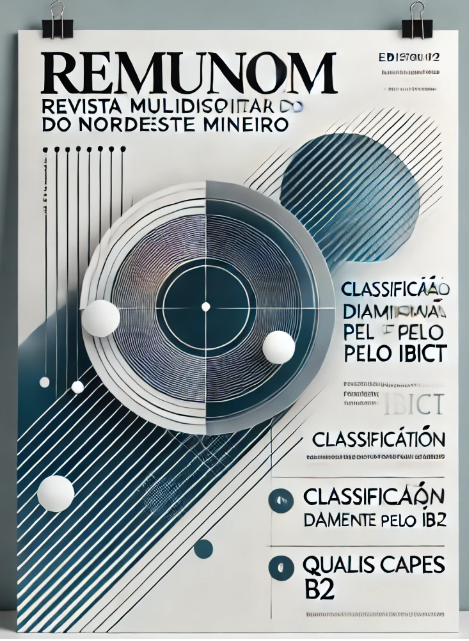ENDOMETRITES IN MARES
DOI:
https://doi.org/10.61164/rmnm.v8i1.3868Keywords:
Equines; Infertility; Inflammation; Uterus.Abstract
Endometritis is the main cause of reduced fertility in mares, in addition to generating major economic and productive losses in equine farming. The accumulation of fluid in the uterine cavity of the mare after insemination is considered normal due to the physiological cleaning reaction developed by the animal itself, in order to eliminate dirt and semen, recognized by the body as a foreign body, preparing the uterus for the installation of the embryo. This process must occur within a period of 24 to 72 hours. Therefore, if this period is exceeded, the accumulation of fluids causes damage to the reproductive health of the animal, causing persistent endometritis, which can evolve into more serious cases such as degenerative endometriosis, excluding the animal from reproduction. Endometritis is the main cause of infertility in mares, and the 3rd leading pathology in horses. The objective of this study was to carry out a systematic review on the subject, showing the main clinical signs, diagnosis and treatment, demonstrating its importance for the reproductive health of mares.
Downloads
References
BETTENCOURT, V.M.E. et al. Reprodução de Equinos - Manual Prático. E. Universidade de Évora, Évora, p. 47-52, 2018.
CARNEIRO, G.F.; SILVA FILHO, A.B. CARNEIRO, L.C. Endometritis in mares: diagnosis and conventional and/or alternative treatments. Ciência Animal, v.30, n.4, p.113-122, 2020.
COUTINHO DA SILVA, M.A.; ALVARENGA, M.A. Fungal endometritis in mares. Equine Reproduction. Iowa: 2ª ed., Wiley-Blackwell, 2011. 3056p.
DASCANIO, J. How and when to treat endometritis with systemic or local antibiotics. AAEP Reproduction, v.57, n.1, p.24–31, 2011.
DIEL DE AMORIM, M.; GARTLEY, C.J.; FOSTER, R.A.; HILL, A.; SCHOLTZ, E.L.; HAYES, A.; CHENIER, T.S. Comparison of clinical signs, endometrial culture, endometrial cytology, uterine low volume lavage, and uterine biopsy, and combinations in the diagnosis of Equine Endometritis. Journal of Equine Veterinary Science, v.44, n.1, p.54-61, 2015. DOI: https://doi.org/10.1016/j.jevs.2015.10.012
FERRIS, R.A.; FRISBIE, D.D.; MCCUE, P.M. Use of mesenchymal stem cells or autologous conditioned serum to modulate the in flammatory response to spermatozoa in mares. Theriogenology, v.82, n.1, p.36–42, 2014. DOI: https://doi.org/10.1016/j.theriogenology.2014.02.015
HOEFEL, H.H.K.; LAUTERT, L. Administração endovenosa de antibióticos e resistência bacteriana: responsabilidade da enfermagem. Revista Eletrônica de Enfermagem, v.8, n.3, p.441-449.
JÚNIOR, J.A.C. Processo inflamatório no útero de éguas: Endometrite. Universidade Federal de Campina Grande - UFCG, Unidade Acadêmica de Medicina Veterinária – UAMV, Patos, 2016.
KATILA, T. Evaluation of diagnostic methods in equine endometritis. Reproductive Biology. v.198, n.1, p.8, 2016.
LEBLANC, M.M.; MCKINNON, A.O. Breeding the problem mare. In: MCKINNON A.O., SQUIRES E.L., VAALA W.E., VARNER, D.V., Equine Reproduction, 2ª ed., U.K: Wiley-Blackwell, 2011. 3056p.
MORRIS, L.H.A.; MCCUE, P.M; AURICH, C. Equine endometritis: a review of challenges and new approaches. Reproduction, [S.L.], v. 160, n. 5, p. 95-110, nov. 2020. Bioscientifica. http://dx.doi.org/10.1530/rep-19-0478. DOI: https://doi.org/10.1530/REP-19-0478
ROMEIRAS, M.I.B. Abordagem da Endometrite num centro de reprodução equina: presença de fluido uterino como parâmetro indicador da inflamação. 2017. 113p. (Dissertação de Mestrado Integrado em Medicina Veterinária). Universidade de Lisboa, Faculdade de Medicina Veterinária, Lisboa, 2017.
SILVA, F.M., BLUME, H. e OLIVEIRA, R.A. Endometrite persistente pós-cobertura. Pubvet, Londrina, V. 8, N. 20, Ed. 269, Art. 1796, Outubro, 2014. DOI: https://doi.org/10.22256/pubvet.v8n20.1796
TROEDSSON, M.H.T. Endometritis. In: MCKINNON, A.O.; SQUIRES, E.L.; VAALA, W.E.; VARNER, D.V., editors. Equine Reproduction, 2ª ed., U.K: Wiley- Blackwell; 2011. 3056p.
PIATTI, A.T. et al. Equine endometrites. Brazilian Journal of Development, Curitiba, v.9, n.9, p. 26711-26724, sep., 2023. http://dx.doi.org/10.34117/bjdv9n9-078 DOI: https://doi.org/10.34117/bjdv9n9-078
Downloads
Published
Issue
Section
License
Copyright (c) 2025 Revista Multidisciplinar do Nordeste Mineiro

This work is licensed under a Creative Commons Attribution-NonCommercial-ShareAlike 4.0 International License.
Autores que publicam nesta revista concordam com os seguintes termos:
- Autores mantém os direitos autorais e concedem à revista o direito de primeira publicação, com o trabalho simultaneamente licenciado sob a Licença Creative Commons Attribution que permite o compartilhamento do trabalho com reconhecimento da autoria e publicação inicial nesta revista;
- Autores têm autorização para assumir contratos adicionais separadamente, para distribuição não-exclusiva da versão do trabalho publicada nesta revista (ex.: publicar em repositório institucional ou como capítulo de livro), com reconhecimento de autoria e publicação inicial nesta revista, desde que adpatado ao template do repositório em questão;
- Autores têm permissão e são estimulados a publicar e distribuir seu trabalho online (ex.: em repositórios institucionais ou na sua página pessoal) a qualquer ponto antes ou durante o processo editorial, já que isso pode gerar alterações produtivas, bem como aumentar o impacto e a citação do trabalho publicado (Veja O Efeito do Acesso Livre).
- Os autores são responsáveis por inserir corretamente seus dados, incluindo nome, palavras-chave, resumos e demais informações, definindo assim a forma como desejam ser citados. Dessa forma, o corpo editorial da revista não se responsabiliza por eventuais erros ou inconsistências nesses registros.
POLÍTICA DE PRIVACIDADE
Os nomes e endereços informados nesta revista serão usados exclusivamente para os serviços prestados por esta publicação, não sendo disponibilizados para outras finalidades ou a terceiros.
Obs: todo o conteúdo do trabalho é de responsabilidade do autor e orientador.






